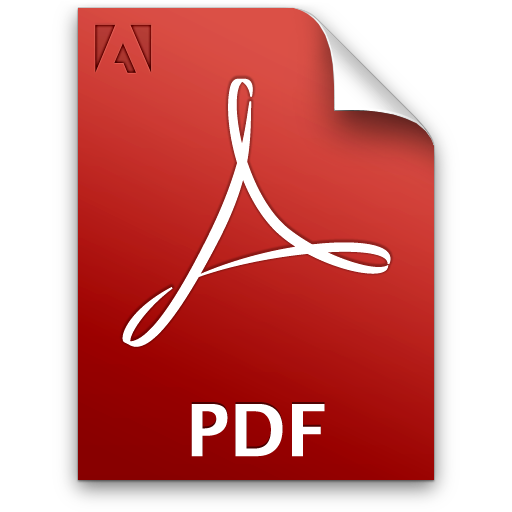ADOLESCENTS IN A VIRTUAL MUSEUM OR HOW TO TEACH ABOUT THE CULTURAL HERITAGE OF OTHER NATIONS
SIKORSKA Joanna –
Senior Lecturer, M.A., Adam Mickiewicz University Faculty of
Educational Studies, Poznań, Poland
e-mail: [email protected]
Анотація
Museums display and represent cultures, they allow visitors to read, see and experience art, virtual museums doubly so – they bring art closer to the viewers. By enabling encounters with the world heritage in a virtual art museum, impossible to achieve for many young people in the real world, such technologies can help them realize that art means timeless values and that dialog across time boundaries is possible. The problem of cultural aspects in young people’s education, including education «through art and to art», is becoming a challenge faced by the contemporary school. «Knowledge has become common property, but the way in which knowledge is converted into meaningful experiences, education, professional and social memories is an open marketplace, in which the museums can have a field day if they will break with their norms and tradition boundself image (...) Within the schools and education area, it is important to have a variety of learning forms and to challenge the analogue and the digital opportunities for expression» (Skaarup, 2014, p. 106). Computers open up new opportunities in the process of discovering art. They also create new paths for teachers adapting presentations to their own and their students’ needs. When searching for ways of making young people participate in culture, teachers may consider the fact that we are dealing with the generation of «digital natives». New technologies give young people an opportunity to reach for the values available to all of us because art – by presenting existential dilemmas, dialectics of joy and suffering, lasting and passing – creates such a possibility. All that is needed is a wise, responsible guide – a highly competent teacher can surely become one. His/her competences must above all also include information and computer skills.
Keywords: adolescents, virtual museum, teaching about cultural heritage of other nations, culture, values, art reception, Google Art Project, transborderness, open mind, information technology.
Повний текст:
СПИСОК ДЖЕРЕЛ
1. About the Google Cultural Institute (December 15, 2016). Retrieved from http://www.googleartproject.com/education/.
2. Bloom A. (2012). Umysł zamkniety. O tym, jak amerykańskie szkolnictwo zawiodło demokrację i zubożyło dusze dzisiejszych studentów (The Closing Of The American Mind. How Higher Education Has Failed Democracy And Impoverished The Souls Of Today’s Students). Poznań: Zysk i S-ka.
3. Fisher, J.A. (2001). The demise of fieldwork as an integral part of science education in UK schools: a victim of cultural change and political pressure? Pedagogy, Culture and Society, 9(1), pp: 75-96.
4. Goban-Klas, T. (2005). W stronę społeczeństwa informacyjnego (Towards the information society). In J. Morbitzer (ed.) Komputer w edukacji. 15. Ogólnopolskie Sympozjum Naukowe (The computer in education. 15th Scientific Symposium) Kraków: Wyd. AP.
5. Hirsch, Jr. E. D. (1987). Cultural Literacy: What Every American Needs to Know. Boston: Houghton Mifflin.
6. Huhtamo, E. (May 26-29, 2002). On the Origins of the Virtual Museum. Virtual Museums and Public Understanding of Science and Culture. Nobel Symposium (NS 120) Stockholm, Sweden. Retrieved from https://www.nobelprize.org/nobel_organizations/nobelf oundation/symposia/interdisciplinary/ns120/lectures/hu htamo.pdf.
7. Krauze-Sikorska, H. (2012). Psychoterapia kreatywna, czyli o odnajdywaniu siebie w artystycznych snach i misteriach oraz odkrywaniu nowego sensu świata (Creative psychotherapy, or on finding oneself in artistic dreams and mysteries as well as discovering a new sense of the world). In M. Cylkowska – Nowak, J. Imielska, E. Kasperek Golimowska (eds.) Podmiot. Sztuka – terapia – edukacja. Między teorią a praktyką (Subject. Art – therapy – education. Between theory and practice) Poznań: Wyd. Naukowe Uniwersytetu Medycznego im. Karola Marcinkowskiego.
8. Krauze-Sikorska, H. (2013). Przestrzenie samotności i osamotnienia młodzieży w społeczeństwie posttradycyjnym (The spaces of solitude and isolation of adolescents in a posttraditional society). In H. Krauze – Sikorska, M. Klichowski Świat Digital Natives. Młodzież w poszukiwaniu siebie i innych [Część I Młodzież w świecie zawirowań globalnego społeczeństwa ryzyka] (The World of Digital Natives. Adolescents in search of self and others) [Part I Adolescents in the turbulent world of global risk society]. Poznań: Wyd. Naukowe UAM.
9. Lorenz, K. (1986). Regres człowieczeństwa. (Humanity’s regress). Warszawa: PIW.
10. Maj, M. (December 12, 2016). Google Art Project - więcej niż wycieczki po muzeach (Google Art Project – more than museum tours). Retrieved from http://di.com.pl/news/35662,0,Google_Art_Project__wi ecej_ni%C5%BC_wycieczki_po_muzeach.html.
11. Museum With No Frontiers (November 28, 2016). Discover Baroque Art. Retrieved from www.discoverbaroqueart.org.
12. Museum With No Frontiers (November 28, 2016). Discover Islamic Art. Retrieved from www.discoverislamicart.org.
13. Postman, N. (1993). Technopoly: The Surrender of Culture to Technology. New York: Vintage Books.
14. Siemieniecki, B. (2002). Komputer w edukacji. Podstawowe problemy technologii informacyjnej (The computer in education. Basic problems of information technology). Toruń: Adam Marszałek.
15. Sikorska, J. (2012). Learning and teaching culture through Virtual Tours, work unpublished. Poznań.
16. Skaarup, B. (2014). The natural history museum as knowledge centre and learning environment. In I. Braendholt, J.T. Jensen (eds.) Museums - Knowledge, democracy and transformation. Danish Agency for Culture.
17. Smith, R. A. (1994). General Knowledge and Arts Education. An Interpretation of E.D. Hirsch
Cultural Literacy. Urbana and Chicago: University of Illinois Press.
18. Souriau, E. (1969). La Correspondance des arts, science de l'homme: éléments d'esthétique compare (The correspondence of the arts, science of man: elements of comparative aesthetics). Paris: Flammarion.
19. Warschauer, M. (2001). On-line communication. In R. Carter, D. Nunan (eds.) The Cambridge Guide to Teaching English to Speakers of Other Languages. Cambridge: Cambridge University Press. 20. Wojnar, I. (1970). Estetyka i wychowanie. (Aesthetics and education). Warszawa: PWN.
21. Wojnar, I. (2000). Humanistyczne intencje edukacji. (Humanistic intentions of education). Warszawa: Wyd. Akademickie «Żak».





